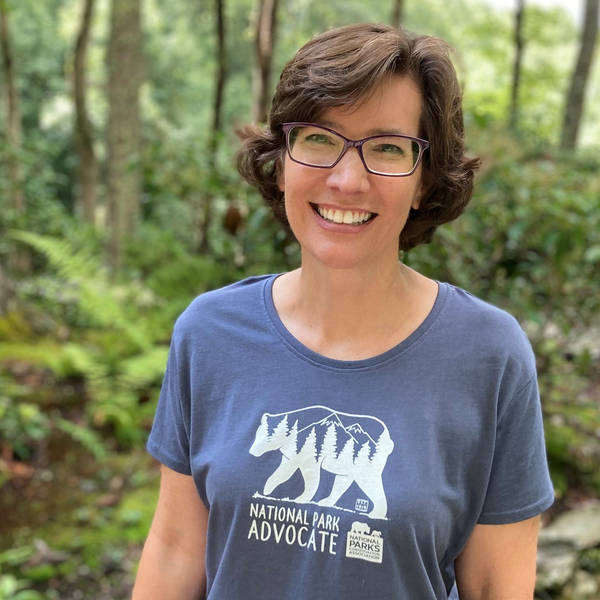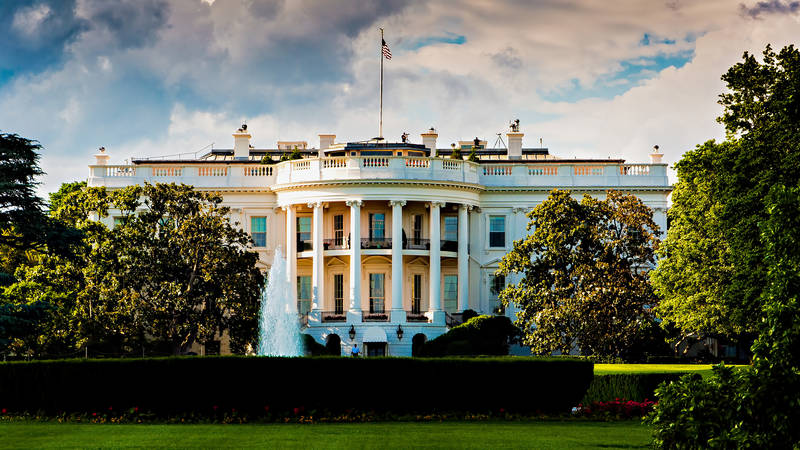The Manhattan Project culminated in the dropping of atomic weapons on Japan by the U.S. in early August 1945, a move that ended World War II. A national park site in three time zones tells the complex story of this pivotal time in human history.
Growing up in Oak Ridge, Tennessee, I frequently heard my town’s nickname, “the Secret City,” and learned about its role in effectively ending World War II in 1945. That was more than 25 years before my family moved there for Dad’s work as an ecologist at Oak Ridge National Laboratory when I was 3 years old. Grade school playmates would talk in what seemed like code to describe where their parents worked: K-25, X-10 or Y-12, names used for the facilities run by the U.S. Department of Energy, the city’s main employer.
My hometown was born of war in 1942, on East Tennessee farmland in the remote Clinch River Valley. The federal government ousted local residents from their communities to hastily construct and secure Oak Ridge — and its sister cities of Los Alamos, New Mexico, and Hanford, Washington — as part of the top-secret Manhattan Project. The goal: to produce materials for use in creating the world’s first atomic bombs.
Eighty years ago this August, the United States dropped those weapons on the Japanese cities of Hiroshima and Nagasaki, killing about a quarter of a million people. The B-29 bomber Enola Gay dropped the first atomic bomb, named “Little Boy,” on Hiroshima, the morning of Aug. 6. When Japan did not surrender, the U.S. dropped a second bomb, named “Fat Man,” three days later on Nagasaki. The bombs’ force had been tested July 16 at a site in New Mexico just 60 miles north of White Sands National Monument, now a national park. Eight decades later, these bombings of Japan remain the only wartime uses of nuclear weapons.
Most of the research, innovation, production and manufacture of the weapons occurred at these three locations. More than 500,000 employees worked for the Manhattan Project, but only a few understood what they were making until news broke of the massive explosions.

Op-Ed: Create a Manhattan Project National Historical Park at Hanford
In 2012, NPCA’s Northwest Regional Council Member Clarence Moriwaki shared how his family members in the U.S. and Japan were impacted by the atomic bomb.
See more ›In collaboration with the Department of Energy, the National Park Service preserves and interprets the historic sites, stories and legacies associated with this race to develop atomic weapons — as well as the controversy surrounding their unprecedented consequences — at Manhattan Project National Historical Park.
Located in three time zones and one of only a few national parks devoted to science and technology, the park site opens key places to the public that once only existed behind security fences. It consists of the labs and living quarters of the Manhattan Project scientists in Los Alamos; the site of the world’s first industrial-scale plutonium reactor, known as the “B Reactor” in Hanford; and three facilities for enriching uranium at Oak Ridge. One of those facilities was the K-25 Gaseous Diffusion Plant, the world’s largest building at the time — a U-shaped structure longer than two Empire State Buildings laid side by side. A museum allows visitors to look over its footprint.
NPCA was part of a broad coalition that worked toward the park’s designation by Congress in 2015. Park enthusiasts and preservationists had worked for nearly 20 years to formally protect Manhattan Project properties and keep artifacts from being lost, while the Department of Energy invested significant time and resources in decontaminating former work sites so they would be safe for the public.
‘Days of Peace and Remembrance’
The choice to create and use these weapons became a pivotal event in human history. To help people reflect on its meaning, the Park Service hosts “Days of Peace and Remembrance” across the three sites each August. According to the Park Service, the programming “acknowledges and interprets the conflicting viewpoints, both historical and modern, that surround the development and use of the world’s first atomic weapons. These events provide an opportunity to reflect on the historical and emotional traumas of the atomic bombings.”
- In Oak Ridge, Aug. 6 begins with a sunrise bell ringing of the nearly 7-foot-tall International Friendship Bell, installed in 1993 at Bissell Park to symbolize peace and reconciliation between the U.S. and Japan. The bell, which was designed by an Oak Ridge artist and cast by a foundry in Kyoto, Japan, is rung once for every year since the atomic bombing of Hiroshima. Members of the public take turns ringing it. During the event, luminaria adorned with messages of peace from community members surround the bell’s display, known as Peace Pavillion.
In Los Alamos, a Lights for Peace program the evening of Aug. 7 at Ashley Pond from 7 to 9 p.m. features the community’s luminaria with peace messages along a path that participants are encouraged to walk contemplatively. At the visitor center, visitors can create their messages of peace and remembrance to be used at the event.
In Washington State, a Lights for Peace program is held the evening of Aug. 9 at Howard Amon Park in Richland, a city near the Hanford site. On Aug. 8, ranger programs about the Manhattan Project and Sadako Sasaki, a child sickened by radiation poisoning who folded 1,000 origami cranes before dying 10 years after the bombings, will be offered at Richland’s REACH Museum from noon to 3:30 p.m. Participants can make origami cranes and write messages of peace on the luminaria bags to be used during Lights for Peace.
People can participate in these events from anywhere by mailing their peace message on a white paper bag (sized 6" x 3-5/8" x 11") and mailing it to any of the park site’s addresses.
A soldier returns home
For me, the Manhattan Project is personal — not only because I grew up in one of its classified cities, but because in 1945 the Army prepared to ship my grandfather to the Pacific after he had already served in Germany as a conscripted soldier. “I would have grown up without a father if it weren’t for the bombs dropped on Japan,” my mother told me and my sister. My grandmother, in her 80s at the time, recounted for us in tears how she and my grandfather hugged tightly at their Pennsylvania train station before his departure, each understanding that based on the staggering number of casualties in the Pacific, this likely would be the last time they saw each other. While on that train, she told us, Pappy’s company received word of the bombings — and he got to return home to his wife and children.
Replica of a World War II-era billboard at the K-25 History Center, part of Manhattan Project National Historical Park in Oak Ridge, Tennessee. It reads “Who Me? Yes You … Keep Mum About This Job.”
© Linda Coutant/NPCAThe Turnpike Gatehouse, one of numerous sites in Oak Ridge, Tennessee, that are part of Manhattan Project National Historical Park. During the Cold War, multiple gatehouses controlled access to secure uranium-enrichment facilities.
© Linda Coutant/NPCAHastily constructed in 1942, Oak Ridge grew to 75,000 residents during World War II. During peak construction, the U.S. government installed 1,000 prefabricated homes every month, such as this B-1 model.
© Linda Coutant/NPCAThe gratitude my mother, grandparents and many others felt for the bombs because they brought about the war’s end also became mixed with a sense of horror and shame. “This is not an event to be celebrated,” I recall a neighbor saying in advance of the 50th anniversary of Oak Ridge’s founding in 1992. My dad co-chaired a committee organizing the commemoration and fielded many perspectives on how to honor — and not to honor — the milestone. In the end, the tribute showcased historical exhibits, community gatherings, lectures and discussions under the theme he coined: “Born of War, Living for Peace, Growing Through Science.” The city’s International Friendship Bell was a gift from Japan as part of that commemoration.
As the Park Service points out, residents of Japan weren’t the only ones harmed during the early days of the atomic age. The production and testing of these weapons released large quantities of radioactive toxins into the environment. People living near the sites were unknowingly exposed through the air, agriculture and food chains and would later identify themselves as “the downwinders.” Not until the 1980s, when I was in high school, did journalists and concerned citizens gain access to Department of Energy documentation confirming the harm that had occurred.
Peacetime progress
The U.S. government dissolved the Manhattan Project after the war, but its facilities continued to explore peacetime possibilities for nuclear science and technology, as they do today.

Make Them Hear You
New signs ask visitors to report to the Department of the Interior anything that portrays U.S. history in a negative light. Tell the administration, instead, to stop meddling.
See more ›Tennessee’s Oak Ridge National Laboratory, Y-12 National Security Complex and K-25 Site, New Mexico’s Los Alamos National Laboratory and Washington State’s Hanford Site have led advances in energy, medicine, national and global security, environmental cleanup, computing and deeper understandings of matter and ecosystems, among other scientific developments.
For me, August is a critical time to remember all this history. I honor the hundreds of thousands who died, those who live with the memories and physical and emotional consequences of the atomic age, and the work all of us must do — scientists, citizens and the National Park Service — to learn from the Manhattan Project so we can keep the world safe from such events happening again.
Learn more
You can discover more about Manhattan Project National Historical Park and NPCA’s role in establishing it in our 2015 interview with Atomic Heritage Foundation founder Cynthia Kelly, who was instrumental in gaining Congress’ bipartisan support for the park site.
NPCA’s Jennifer Errick contributed to this report.
Stay On Top of News
Our email newsletter shares the latest on parks.
About the author
-
 Linda Coutant Staff Writer
Linda Coutant Staff WriterAs staff writer on the Communications team, Linda Coutant manages the Park Advocate blog and coordinates the monthly Park Notes e-newsletter distributed to NPCA’s members and supporters. She lives in Western North Carolina.
-
General
-
Issues





